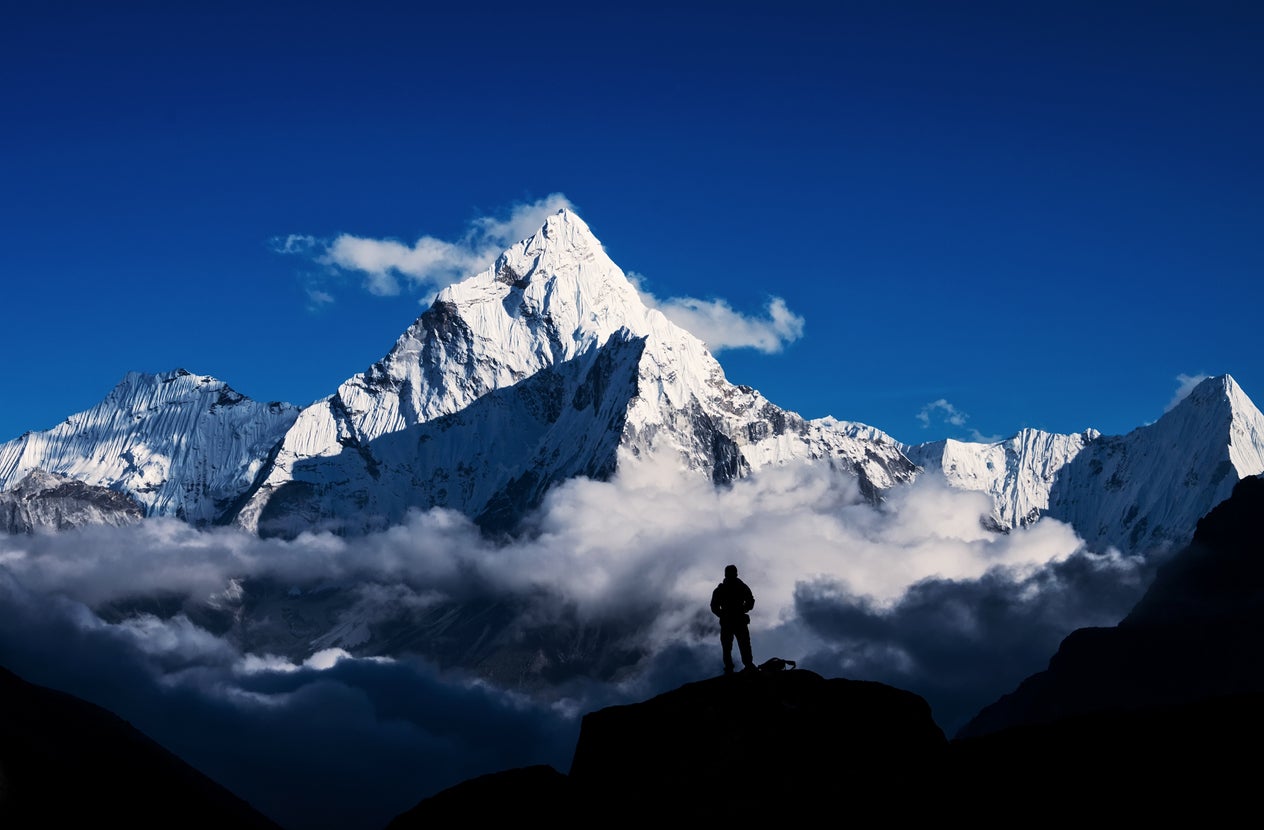Drone footage reveals terrifying scale of Mount Everest
‘I don’t know how or why [people] do it,’ wrote one viewer

Your support helps us to tell the story
From reproductive rights to climate change to Big Tech, The Independent is on the ground when the story is developing. Whether it's investigating the financials of Elon Musk's pro-Trump PAC or producing our latest documentary, 'The A Word', which shines a light on the American women fighting for reproductive rights, we know how important it is to parse out the facts from the messaging.
At such a critical moment in US history, we need reporters on the ground. Your donation allows us to keep sending journalists to speak to both sides of the story.
The Independent is trusted by Americans across the entire political spectrum. And unlike many other quality news outlets, we choose not to lock Americans out of our reporting and analysis with paywalls. We believe quality journalism should be available to everyone, paid for by those who can afford it.
Your support makes all the difference.New drone footage has revealed the terrifying scale of Mount Everest and the many dangers climbers must overcome to scale the world’s tallest peak.
At 8,849 metres tall, there are several camps on the mountain where climbers can stop on their journey, beginning with Base Camp, which is still a whopping 5,364 meters above sea level.
There are a further four camps higher up the mountain, which experts advise only the most experienced of climbers attempt to summit.
But as this drone footage demonstrates, the terrain presents many challenges even before climbers enter the 8,000-meter “Death Zone”, which, as its name suggests, is where the human body simply cannot survive for an extended period of time.
The video went far from unnoticed after it was posted by Everest Today on Twitter/X, with many users admitting that it gave new context to the dangers associated with scaling the mountain.
“What a fantastic video, thank you,” wrote one viewer.
“I have read so many books on Everest attempts and this has literally brought it all to life. I don’t know how or why these guys do it, but I do think we need to slow it down...”
Check out this @DJIGlobal video of its DJI Mavic 3 Pro flying over Mt #Everest (8848.86 m). The drone ascended ~3,500 meters from the base camp to the summit of the highest mountain in the world. pic.twitter.com/cHOTGpkiFT
— Everest Today (@EverestToday) July 11, 2024
A second viewer suggested that drones could be used in the future when climbers get into trouble on the mountain.
“Excellent footage,” they wrote. “Can be of great help dropping meds or maybe oxygen cylinders for height-stricken mountaineers. A life-saving angel at those challenging [heights] for search and rescue.”
It is believed that as many as 330 people have lost their lives on Everest since the first attempts to summit the mountain were made in the 1920s.
Because of the high altitudes, many of the bodies remain unrecovered and serve as grim trail markers to those attempting to summit its peak.
Some viewers, however, questioned the legitimacy of the video which was taken by DJI, a company that describes itself as being “the world leader in aerial and handheld cinematic solutions.”
Another said the addition of drones is the last thing the mountain needs, writing: “The last thing that was missing from Everest. It already has queues that make it look like bank holiday on Snowdon and now idiots with drones too!” [sic]
The footage comes after British climber Dan Paterson, 39, from Wakefield, went missing on the mountain earlier this year with his Sherpa guide, Pas Tenji, 23.
According to reports, the pair were lost when a cornice - an overhanging of snow - suddenly collapsed, prompting further concerns about overcrowding on the mountain.

Nepal’s Supreme Court is now calling on the government to limit the number of passes it issues to climb the mountain.
However, as it is located in an otherwise relatively impoverished country, there are concerns that nothing will be done because of the amount of money Everest tourism brings to the area.
Passes to climb the mountain can be purchased by anyone for $11,000 (£8,900).
Vinayak Jaya Malla, who climbed Everest the day Paterson and his guide went missing in May, recalled the overcrowding on social media.
“As the cornice collapsed, four climbers nearly perished yet were clipped onto the rope and self-rescued. Sadly, two climbers are still missing. We tried to traverse yet it was impossible due to the traffic on the fixed line,” he wrote.
“Many climbers were stuck in the traffic and oxygen was running low. I was able to start breaking a new route for the descending traffic to begin moving slowly once again.”
The Independent has reached out to DJI for more information.